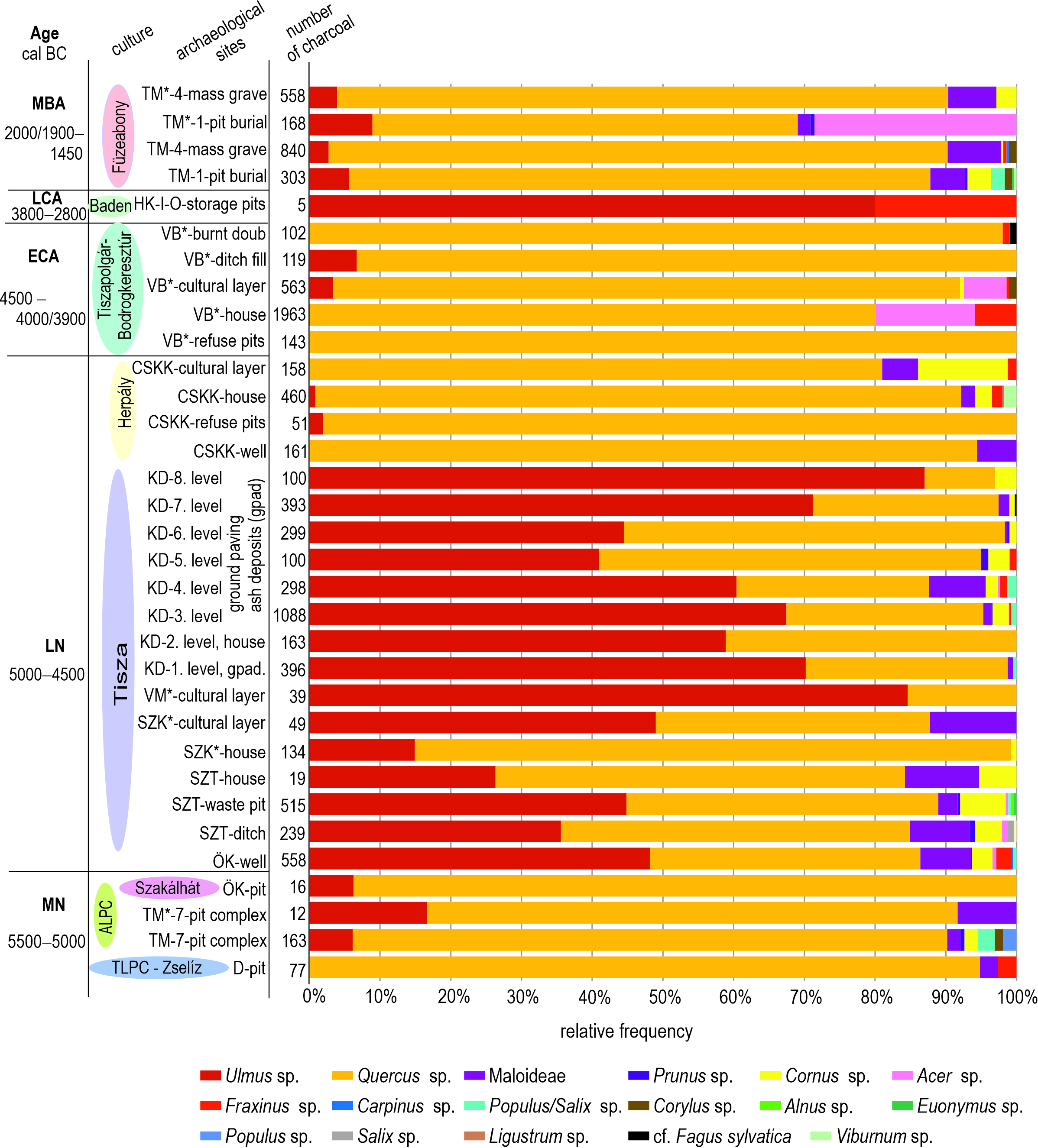Woodland composition in the Great Hungarian Plain during the warmer summers of the Early-Middle Holocene: charcoal holds its secrets

Charcoal may seem an insignificant archaeological find at first glance, but in reality, it is a key resource for understanding the past environment and related human activity. This is the contribution of the recently published study by Gabriella Darabos, Enikő Magyari, Ilona Pál, Máté Merkl, and Gábor Csüllög, co-authors of the Department of Archaeology, and several Hungarian and international co-authors, who analysed some 9600 charcoal fragments from 10 archaeological sites in the Great Hungarian Plain.
The detailed analysis of charcoal remains (anthracological finds) from Neolithic, Copper, and Middle Bronze Age settlements allows the reconstruction of the vegetation of the area and the identification of the purposes and species of wood used by prehistoric communities. The studies have shown that the most common tree species used by prehistoric communities was oak (Quercus), which is an excellent material for building and firewood. Elm (Ulmus) was also represented in significant proportions (approximately 48%) in the Late Neolithic, especially in floodplain forests and forest-steppe vegetation. However, by the Early Copper Age, however, the proportion of elm had declined dramatically, probably due to a combination of factors: climate change, changes in hydrological conditions, disease, and human interference, such as increased forest use. The disappearance of the elm seems to coincide with the abandonment of the Neolithic habitation mounds and the transformation of the settlement structure. Thus, the climate change of the Middle Holocene, which occurred 6500 years ago, may have marked not only an ecological but also a cultural turning point.
This study also demonstrated that the use of wood was closely adapted to the local environment. Communities living in floodplain areas adapted to wet and marshy conditions and collected the available tree species accordingly. Thus, anthracological data not only provide information on the vegetation history of the lowlands but also contribute to our understanding of long-term changes in the human-environment relationship. Therefore, charcoal is not only the ash of past hearths but also the memory of ancient forests and communities.
The study, entitled "Neolithic, Copper, and Bronze Age woodland composition and exploitation in the Great Hungarian Plain, East-Central Europe", has been published in the scientific journal Quaternary Environments and Humans.


